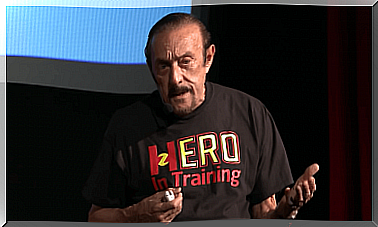What Is Equity Theory And How Does It Condition Us?

Have you ever been in a relationship that you felt was bringing you nothing or that you were contributing much more than the other party? How you felt? How have you acted? This is precisely what the theory of equity proposed by the psychologist John S. Adams in 1963 speaks of. It is totally logical to feel bad when a relationship gives us less than what we offer.
This can be extrapolated to practically any type of relationship. When we feel like this, we tend to act in a certain way to reduce such dissonance, such a sense of injustice. How to regain the sense of balance, that which seems to be continually seeking? How does your search affect our self-esteem? We tell you everything through this theory of social psychology.

What is the theory of equity?
The theory of equity is a theory developed by the behavioral psychologist John Stacey Adams in 1963, and we can frame it within social psychology. In turn, it can also be applied in the field of organizational psychology. What exactly does this theory consist of?
Its objective is to explain what happens when we feel that there is an unequal relationship between what we contribute and what we receive within a relationship (of any kind). And it is that people always tend to seek balance in all facets of our life, which includes (and especially in) social relationships. Let’s learn more about it through its two key elements:
Social comparison and cognitive dissonance
The theory of equity is based on two central concepts by another author. I mean Leo Festinger, social comparison and cognitive dissonance. Social comparison occurs when we compare ourselves with others to obtain information associated with us, something that practically everyone does. In addition, we do not compare ourselves with anyone, but we tend to compare with some that have specific characteristics.
As for cognitive dissonance, this concept refers to a state of discomfort that we experience when what we do and what we think (or feel) do not coincide. Thus, when we feel that discomfort, we seek to eliminate it, through different mechanisms: changing our opinion, our attitude, our behavior, relativizing the situation or making it less important, etc.
Characteristics of the theory
The theory of equity refers to different points or concepts. We can talk about three:
1. Comparison between what was contributed and what was received
People, when we have to make an effort to achieve something or when we find ourselves in a situation of exchange in a relationship, we take into account (consciously or unconsciously) two aspects: on the one hand, what we contribute to the relationship (what do I give) ; on the other, what the relationship brings us (what do I get).
Bearing these values in mind, we tend to seek a balance between what we contribute and what we receive ; We seek to feel that the relationship is fair, it is equitable.
That is, we analyze what we give and what we receive, feeling comfortable when we identify a balance. Contributions can come in different ways: effort, time, enthusiasm, money, sacrifice … And in the same way, receive the same (or different elements). But there is always an exchange; any human relationship, whatever it may be, is based on these exchange relationships.
If we feel an inequality in this exchange ratio (for example, “I give more than I receive”), the Festinger dissonance appears. As a consequence, we act to reduce this dissonance – and the resulting discomfort. A motivational force is born, an interest in change thanks to that perceived tension. Here also appears the other concept of Festinger: social comparison, since we compare what the other contributes with what we contribute.
2. Strength, motivation or tension
As we said, we analyze the exchange relationship and depending on what we perceive (if we feel that this relationship is “unfair”), an internal tension, a force or motivation appears in us. This force seeks to reduce or eliminate dissonance by reducing perceived inequality. On the contrary, if we feel that this relationship is equitable, it is fair, that force does not appear.
3. Taking action
Faced with that dissonance, that feeling of imbalance in the relationship (it could be a friendship, a couple, a work relationship …), we can operate in different ways. What options we have?
- Reduce the efforts invested in the relationship (or time, sacrifice, enthusiasm …).
- Demand more contributions (or involvement) from the other party.
- Change our comparison reference.
- Maximize what we are receiving from the other party.
- Go to self-deception.
- Leave the relationship, break it.
As we can see, the options available to us in the face of this cognitive dissonance are multiple. When we talk about self-deception, for example, we must know that it is usually easier to modify the vision we have of what others offer us (to think that it is actually “more” than it really is) than to modify the vision of what others offer us. we contribute ourselves to the relationship.
In reality, self-deception is a kind of defense mechanism, which keeps us “tied” many times to relationships that, deep down, do not satisfy or compensate us.

How does it influence our self-esteem?
The theory of equity talks about what has happened to all of us at some time: feeling bad in a relationship and not understanding very well why. In the same way that it makes us feel bad to receive less than what we contribute, receiving more than what we contribute can also generate negative feelings, such as guilt.
The balance we make in our relationships has effects on our self-esteem and our self-concept, since staying in a relationship where we do not feel valued can have a very negative impact on our mental health.
For this reason, it is convenient to review what type of relationships we maintain in our lives, what they contribute to us and if they really compensate us. And once done, become aware of what we really want in our life, to make the necessary changes to get there.









